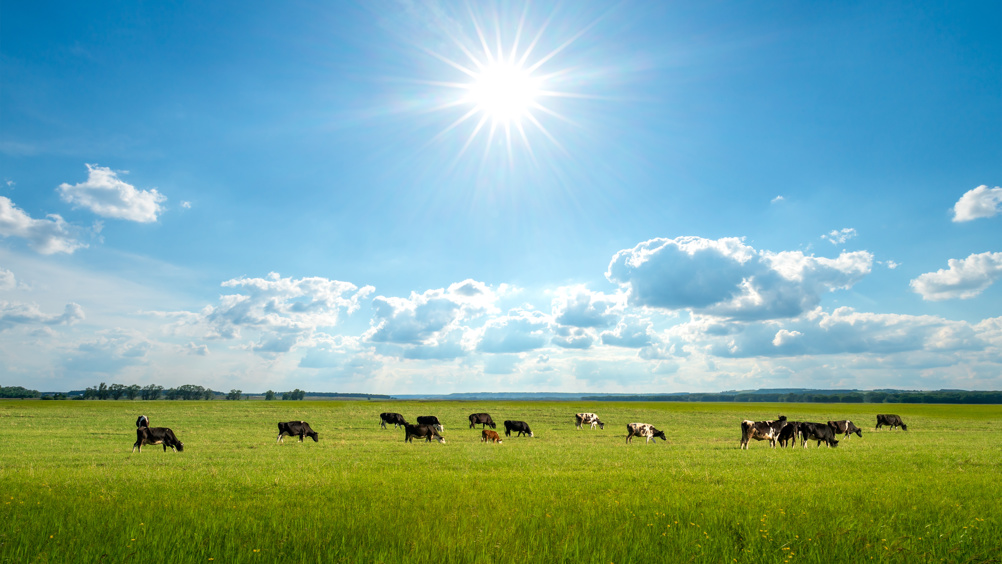Heat stress
A review paper on heat stress was published by Lemal et al (2023) (10.3168/jds.2022-22727). Heat stress implies unfavourable effects on primary and functional traits in dairy cattle and, in consequence, on the profitability of the whole production system. The increasing number of days with extreme hot temperatures suggests that it is imperative to detect the heat stress status of animals based on adequate measures. However, confirming the heat stress status of an individual is still challenging, and, in consequence, the identification of novel heat stress biomarkers, including molecular bio-markers, remains a relevant issue. Currently, it is known that heat stress seems to have unfavourable effects on immune system mechanisms, but this information is of limited use in the context of heat stress phenotyping. In addition, there is a lack of knowledge addressing the molecular mechanisms linking the relevant genes to the observed phenotype. In this review, the authors explored the potential molecular mechanisms explaining how heat stress affects the immune system and, therefore, increases the occurrence of immune-related diseases in cattle. In this regard, two relatively opposite hypotheses are considered: the immunosuppressive action of cortisol, and the proinflammatory effect of heat stress. In both hypotheses, the modulation of the immune response during heat stress is highlighted. Moreover, it is possible to link candidate genes to these potential mechanisms. In this context, immune markers are valuable indicators for the detection of heat stress in dairy cattle, broadening the portfolio of potential bio-markers for heat stress.
Effects of heat stress
Heat stress negatively affects dry matter intake (DMI), milk yield (MY), feed efficiency (FE), and free water intake (FWI) in dairy cows, with detrimental consequences to animal welfare, health and profitability. Absolute enteric methane (CH4) emission, yield (CH4/DMI), and intensity (CH4/MY) may also be affected. Therefore, the goal of a study by Souza et al (2023) (10.3168/jds.2022-22658) was to model the changes in dairy cow productivity, water intake, and absolute CH4 emissions, yield, and intensity with the progression of a cyclical heat stress period in lactating dairy cows. Heat stress was induced by increasing the average temperature by 15°C (from 19°C in the thermoneutral period to 34°C) while keeping relative humidity constant at 20% in climate-controlled chambers for up to 20 days. A database composed of individual records (n=1675) of DMI and MY from 82 heat-stressed lactating dairy cows housed in environmental chambers from 6 studies was used. Free water intake was also estimated based on DMI, dry matter, crude protein, sodium and potassium content of the diets, and ambient temperature. Absolute CH4 emissions was estimated based on DMI, fatty acids, and dietary digestible neutral detergent fibre content of the diets. Generalised additive mixed-effects models were used to describe the relationships of DMI, MY, FE, and absolute CH4 emissions, yield and intensity with heat stress. Dry matter intake and absolute CH4 emissions and yield reduced with the progression of heat stress up to 9 days, when it started to increase again up to 20 days. Milk yield and FE reduced with the progression of heat stress up to 20 d. Free water intake decreased during the exposure to heat stress mainly because of a reduction in DMI; however, when expressed in kg/kg of DMI it increased modestly. Methane intensity also reduced initially up to day 5 during heat stress exposure but then started to increase again following the DMI and MY pattern up to day 20. However, the reductions in CH4 emissions occurred at the expense of decreases in DMI, MY and FE. This study provides quantitative predictions of the changes in animal performance and CH4 emissions with the progression of heat stress in lactating dairy cows. The models developed in this study could be used as a tool to help dairy nutritionists decide when and how to adopt strategies to mitigate the negative effects of heat stress on animal health and performance and related environmental costs.
Cooling of cows
The aim of a study by Gaughan et al (2023) (10.3168/jds.2022-22819) was to assess effects on MY, rumen temperature, and panting score when lactating dairy cows were cooled during the day only or during the day and night. The study was conducted over 106 days using 120 multiparous Holstein-Friesian cows assigned to two treatments: (1) day cooling (DC): overhead sprinklers and fans while in the dairy holding yard only, shade and fans at the feedpad, and a shaded loafing area; and (2) enhanced day and night cooling (EDN): overhead sprinklers and fans in dairy holding yard, ducted air blowing onto cows during milking, plus thorough wetting on exit from the dairy; shade and fans at feedpad and shaded loafing area and ducted fan-forced air blowing onto cows at night. Rumen temperature and cow activity were obtained from each cow at 10-minute intervals via rumen boluses. Cows were milked twice daily. Individual MY were obtained at each milking. The EDN cows had greater daily MY (+2.05 kg/cow per day) over the duration of the study compared with DC cows showing the importance of cooling during the night as well as the day.


